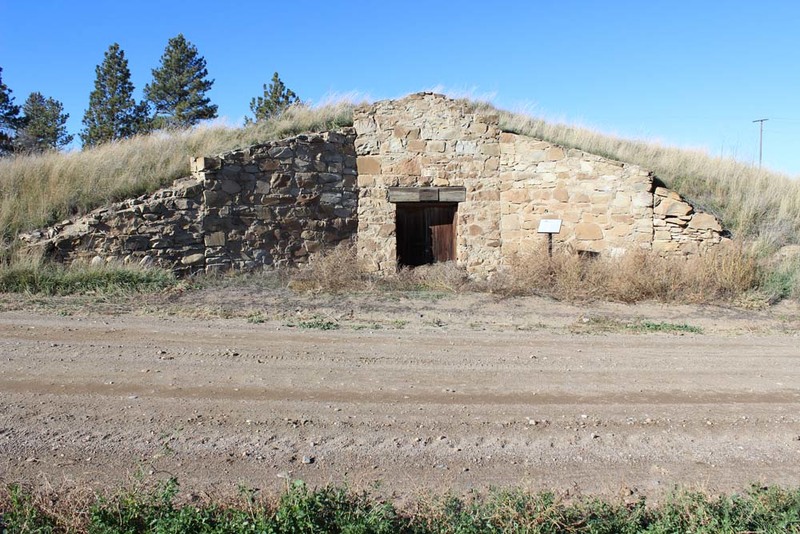
Before refrigeration, rural Americans preserved perishables in root cellars. The fort’s first root cellar, a 100-by-20-foot structure, was built in 1879-80. In 1902 the government invested $3,900 about $237,000 in 2011 dollars to replace the original root cellar with three identical structures at the southeast end of the parade ground. Only the southernmost wood, cement, and sod building remains intact. Built into the hillside, the 25-by-75-foot structure has walls 18-by-24-inch thick. To take advantage of dirt’s insulating qualities, only the entry is aboveground and the center section’s arched top is covered with sod. Three small wood-framed ventilation shafts circulate enough air to keep produce fresh. Hinged double-entry doors open onto a small vestibule, further protecting the main storage area from temperature extremes. The cellar stored the fort’s garden bounty as well as purchased provisions. Each infantry and cavalry company had its own gardeners. In large irrigated fields bordering Beaver Creek, they grew thirty different crops. Troop-grown potatoes, turnips, corn, onions, carrots, squash, apples, garlic, and rutabagas all wintered well in the root cellars, improving the health and quality of meals at the fort.
Images


